Solar Power Inverter System Development In Vietnam
 Sep 24,2024
Sep 24,2024

 XINDUN
XINDUN
Against the backdrop of the continued development of the global solar power industry, Vietnam, as an emerging market in Southeast Asia, is also experiencing a booming solar power industry. As one of the core devices in a solar power system, the performance and quality of the inverter directly affect the solar power efficiency and operational stability of the entire system. Therefore, an in-depth investigation and analysis of the solar inverter industry in Vietnam is of great significance for understanding the current status of Vietnam's solar industry and grasping its development trends.
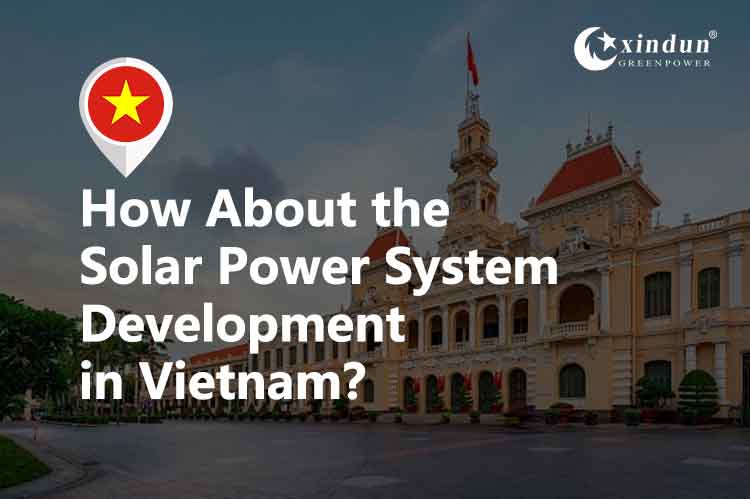
I. What are the environmental conditions for solar power in Vietnam?
1. Superior solar energy resources:
Vietnam is located in Southeast Asia, in tropical and subtropical regions, with a warm climate and abundant sunshine. This geographical location and climatic conditions provide Vietnam with abundant solar energy resources. Vietnam has high solar radiation, especially in the central and southern regions, where the annual radiation reaches a high level, which is suitable for the construction and development of solar power projects.
2. Growing demand for electricity:
Vietnam's GDP has grown rapidly in recent years. In 2023, Vietnam's GDP was about US$430 billion, with manufacturing accounting for about 24%. At the beginning of this year, the number of new investments in foreign-funded factories exceeded 160. More and more Chinese and other countries' investors are coming to Vietnam to invest, and the demand for electricity is also increasing. The large-scale use of fossil fuels for power doesn’t comply with Vietnam's regulations on carbon emissions, and solar energy, as a clean and renewable energy, can effectively supplement and meet the growing demand for electricity.
3. Government support and policy preferences:
The Vietnam government actively promotes the development of renewable energy, especially solar power. The government provides long-term power purchase contracts for solar pv projects to ensure long-term price stability. Zero tariffs are imposed on the import of solar pv equipment, and value-added tax, local tax and land use fees can be reduced or exempted for solar pv project investment. These preferential policies further reduce the cost of solar power and improve its competitiveness.
Ⅱ.Is Vietnam short of electricity?
There is no doubt that Vietnam is short of electricity, and Vietnam's electricity demand continues to grow. In particular, in 2024, electricity demand is expected to increase by 8.96% compared with 2023, and during the May-July period, electricity demand is expected to increase by 13%, which is much higher than the planned 9.6% growth. Especially in the northern industrial powerhouse, the year-on-year growth is as high as 17%, which is expected to set a record high.
The rapid growth of electricity demand has put Vietnam's electricity supply in a tight situation. In the summer of last year, Vietnam experienced a power shortage, which forced more than 11,000 companies across the country to reduce electricity consumption. This year, due to a rare heat wave sweeping across Southeast Asia, Vietnam's power supply situation has become even more severe.
In order to cope with the power shortage, the Vietnam government has taken a series of measures. For example, Vietnam Prime Minister Pham Minh Chinh has called on households and businesses to reduce electricity consumption during peak hours and install rooftop solar power system to save electricity. In addition, the Vietnam government has signed an agreement with China Southern Power Grid Guangxi Power Grid Company to purchase electricity from China's Yunnan and Guangxi provinces to ease Vietnam's solar power supply situation.
The shortage of electricity has had a serious impact on Vietnam's manufacturing industry. Due to insufficient solar power supply, some factories have to temporarily suspend operations or reduce production capacity, which not only affects the normal production of enterprises, but also hits Vietnam's status as a manufacturing powerhouse.
Faced with the problem of power shortage, enterprises have also taken measures to deal with it. For example, some factories install solar power system and configure emergency power equipment such as generators to ensure that production can be maintained during power outages.
Ⅲ.Electricity prices in Vietnam
Since May 15, 2024, the Vietnamese government has implemented a mechanism to adjust electricity prices every three months. This means that electricity prices in Vietnam will be adjusted regularly based on factors such as market demand and supply.
Average retail electricity price: According to data released by Vietnam Electricity Group (EVN) in August 2023, the average electricity price increased from 1864.44 VND/kWh to 1920.37 VND/kWh (about 0.57 RMB/kWh), which is an adjusted electricity price excluding VAT.
Industrial electricity price: Since Vietnam relies heavily on imports for electricity, industrial electricity prices are particularly high. According to some sources, Vietnam's industrial electricity price is about 1500 riel/kWh, one US dollar is equivalent to 4000 riel, which is close to RMB 2.5/kWh at the current exchange rate.
Imported electricity price: The price of electricity imported from China by Vietnam is 6.5 cents per kilowatt-hour (about 4.62 yuan per kWh), which is cheaper than the price of electricity purchased by domestic wind power stations in Vietnam. The cost of generating electricity by Vietnam itself, such as the electricity price of onshore wind power generation equipment, is 8.5 cents per kilowatt-hour, and the offshore wind power generation facilities are 9.8 cents.
Electricity price fluctuations: According to the electricity price adjustment mechanism, if the average electricity price drops by more than 1% compared with the current electricity price, it will be adjusted accordingly; if the average electricity price rises by more than 3%, the electricity price will be allowed to increase.
IV.Vietnam's power generation capacity
According to Nang Luong Vietnam data, Vietnam's installation capacity will reach 80,555MW in 2023, a slight increase of 2,800MW from 2022, of which more than 50% of the electricity come from renewable energy. Solar and wind power generation accounted for 26.9% (21,664MW) of the total capacity, hydroelectric power generation 28.4% (22,872MW), thermal power generation 33.2% (26,757MW) and gas power generation 8.9% (7,160MW). However, among the above-mentioned installation capacity, Vietnam Electricity Group (EVN) and its related companies only contributed 29,966MW, accounting for 37.2% of the total.
Vietnam's actual power generation in 2023 is 280,629MW, with hydropower 80,904MW, accounting for 28.83%, coal-fired thermal power 129,577MW, accounting for 46.17%, gas-fired power 26,315MW, accounting for 9.38%, fuel-fired power 1,267MW, accounting for 0.45%, and imports 4,191kWh , accounting for 1.49%, one of which renewable energy power is 37,922MW, accounting for 13.51%, and solar power is 25,702MW, accounting for only 9.16% of Vietnam’s total power. This shows that Vietnam’s solar pv industry and market have huge potential development.

V.Vietnam's 2024 Solar Power Policy
According to VNA, the Vietnam Ministry of Industry and Trade held a "Drafting Meeting on Incentive Measures for Rooftop Solar Power " on April 10. At the meeting, the Vietnam Ministry of Industry and Trade revealed the latest solar policy trends. In the future, Vietnam's rooftop solar can be connected to the grid and the surplus electricity can be sold to power companies, and the public or enterprises can obtain corresponding income from this.
The scale of rooftop solar installations will not be limited to the provisions of the eighth edition of Vietnam's "National Power Development Plan", and the Vietnamese government also intends to give preferential interest rates for energy storage equipment investment.
Vietnam Deputy Prime Minister Chen Honghe emphasized at the meeting that under the conditions of technical licensing, system safety and reasonable prices, priority should be given to the development of rooftop solar wind power and other power projects. Among them, rooftop solar are more in line with economic interests and land planning, and are a cost-saving and effective solution. The Ministry of Industry and Trade of Vietnam is also requested to formulate an operating method, including two major mechanisms for self-use and sale, and formulate relevant incentives.
For rooftop solar such as office buildings and residential houses that are only for self-use and not for sale, the procedures and necessary documents should be simplified.
For corporate rooftop solar, if energy storage equipment is installed, reasonable prices, loan interest rates and tax incentives should be given.
The Vietnam Electricity Group said that there should be policies to encourage industrial park enterprises to install energy storage equipment, convert surplus electricity into clean basic power, and transmit the stored energy to the national grid at a suitable price at night.
Vietnam energy expert Tao Riting said that investors who want to sell rooftop solar surplus electricity should install additional energy storage equipment. Store excess electricity during the day and release it for use or transmit it to the national grid for sale at night. The investment cost of energy storage equipment is 2 to 3 times more expensive than solar panels, so the government should give preferential interest rates.
Compared with the draft content of the Ministry of Industry and Commerce at the end of 2023, the Vietnam Electricity Group can purchase surplus electricity for "0 yuan" to maintain the stable operation of rooftop solar energy of various enterprises, organizations and people. After the direction of the regulations is revised, it is expected to increase the willingness of some investors.
The Ministry of Industry and Commerce stated that if the Vietnam government permits, the ministry will draft a decree and solicit public opinions (at least 60 days) from May to July. It is expected that the Ministry of Industry and Commerce will revise the first draft in August and enter the formal process. The draft will be completed and submitted to the government for approval as early as October. If all goes well, the bill will come into effect in December.
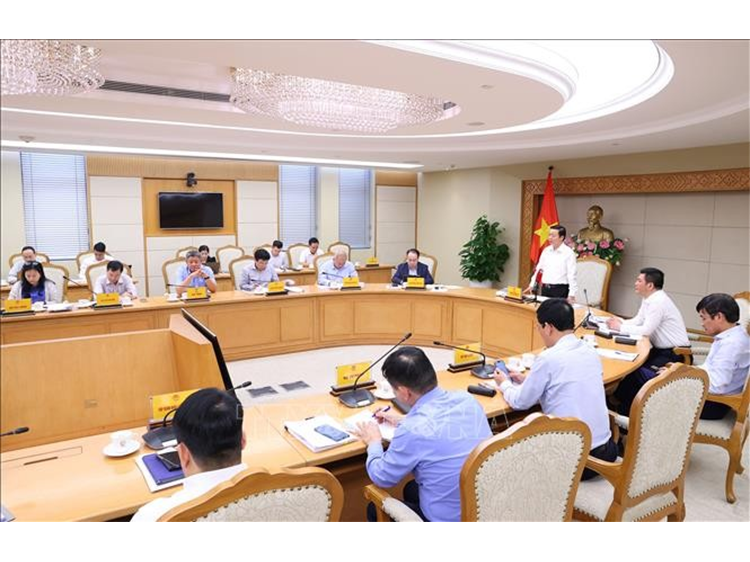
VI. Potential Development of Solar Power in Vietnam
Vietnam is working hard to transform from traditional energy sources such as coal and oil power to renewable energy to meet the country's sustainable development needs and reduce negative impacts on the environment. Based on its original advantages, Vietnam has great potential to develop renewable energy.
According to Vietnam's national power development plan, by 2030, Vietnam's renewable energy will account for 15% to 20% of the country's total energy supply, and by 2045, it will reach 25% to 30%. At present, thermal power and hydropower are still the main sources of energy supply in Vietnam due to stable power supply and moderate cost prices.
Based on the advantages of geography and natural resources, Vietnam's investment in renewable energy will help Vietnam more independently guarantee the energy needed for economic development.
According to the analysis of Bloomberg New Energy Finance, it is expected that the five countries with the largest solar installed capacity in Southeast Asia in 2024 will be Vietnam, the Philippines, Thailand, Malaysia, and Indonesia.
Vietnam's solar industry development is in a leading position in Southeast Asia, and the cumulative installed capacity has reached 13GW, accounting for nearly 70% of the entire Southeast Asia region. In addition, Vietnam has more than 8GW of projects under preparation. According to Vietnam's previously announced goals, it will need to add about 13GW of solar installed capacity by 2030. According to the World Bank, Vietnam's solar power rate will reach 85GW in 2030 and 214GW by 2050.
With an average of more than 2,500 hours of sunshine per year, Vietnam has great potential for solar power. At present, the Vietnam government has issued a number of preferential policies to attract investment in this field. The increasing demand for electricity in Vietnam has created huge opportunity for the development of solar energy in Vietnam.
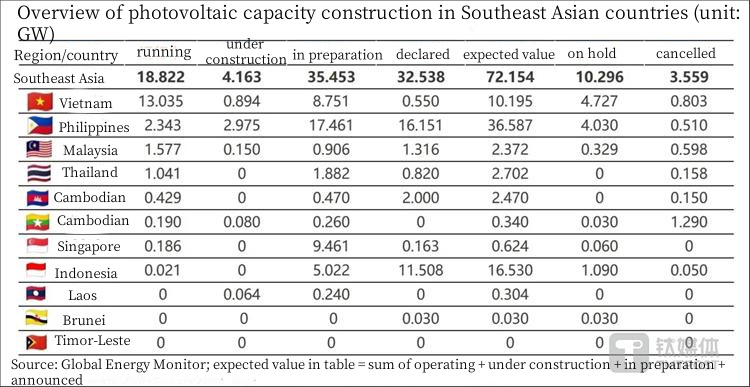
Ⅶ. Working principle of solar power system
Let's first understand the solar power system.
1. Solar energy collection
Solar power system use solar panels to collect sunlight. These panels are usually composed of multiple solar cells, which are made of semiconductor materials such as silicon.
When sunlight shines on the solar panels, photons hit the semiconductor materials in the cells and excite electrons. These excited electrons will generate current under the action of the electric field to form direct current (DC).
2. Solar conversion
The DC collected from the solar panels needs to be converted by the inverter. The function of the inverter is to convert DC into AC to meet the electricity needs of users such as households and industries.
3. Power output and storage
Solar power system is usually equipped with battery packs to supply power to loads at night or when there is insufficient light.
Ⅷ. Equipment composition of solar power system
1. Solar panels: responsible for collecting solar energy and converting it into DC. Solar panels are the core part of the system, and their performance directly affects the power efficiency of the entire solar power system.
2. Inverter: Converts the DC generated by solar panels and the DC of batteries into AC for use by households, industries and other users. The inverter is also responsible for adjusting the voltage and frequency, such as 220v, 60Hz, to ensure that the output power meets the requirements of the power grid.
3. Batteries: used to store the power by solar panels so that it can supply power to the load at night or when there is insufficient light. The capacity and performance of the battery directly affect the system's energy storage capacity and continuous power supply time.
4. Solar controller: responsible for monitoring and managing the operation of the solar power system, including adjusting the output voltage and current of the panels, controlling the charging and discharging process of the battery, etc.
IX. Types of Solar Power Systems
Solar power systems are divided into three different types of solar power systems according to different applications and needs:
1. Off grid solar power system: This system is mainly composed of solar panel, solar controller, batteries and inverter, and does not rely on the public power grid for power supply. In the off grid power system, the electricity generated by the solar panels is first supplied to the load, and the excess electricity is stored in the battery. When the electricity generated by the solar panels is not enough to meet the load demand, the battery will release electricity to supplement it.
2. On Grid solar power system: This system converts the DC generated by the solar panels into AC that meets the requirements of the municipal power grid through the on grid inverter and directly connects to the public power grid. The on grid power system can achieve complementary power supply with the public power grid. When the electricity generated by the solar panels exceeds the load demand, the excess electricity can be sold to the power grid; when the electricity generated by the solar panels is not enough to meet the load demand, the electricity can be supplemented from the power grid.
3. Distributed solar power system: This system configures a smaller solar power system at the user site or near the power consumption site to meet the needs of specific users. Distributed solar power system have the advantages of flexible installation, reliable operation, and easy maintenance. They are particularly suitable for use in industrial parks, schools, hospitals and other places.
X. What type of home solar power system is suitable for installation in Vietnam?
For the selection of home solar power system in Vietnam, the first thing to consider is the comprehensive factors such as the electricity demand of Vietnam families, the area occupied and orientation of solar panels, and the budget. Below, Xindun introduces the advantages and disadvantages of these types, and recommends which type of home solar power system to install based on the situation in Vietnam.
1. Off grid home solar power system
If your home is located in a remote area, the power grid is not covered, or there are frequent power outage, and you want to manage electricity more independently, then an off grid solar power system will be your ideal choice. This system converts solar energy into electrical energy through solar panels, and then stores the electrical energy through batteries for home use.
The disadvantage of the off grid solar system is that the cost of energy storage equipment (battery) is high, accounting for a large proportion of the cost of the power system, and the later replacement and maintenance will also increase the total cost of the system.
2. On grid home solar power system
After the on grid solar power system converts solar energy into electrical energy, it is converted by on grid inverter and then connected to the grid for use. When there is surplus electricity after household electricity consumption, it can be sold to the power grid company; and when your household electricity consumption is higher than the solar power, the grid will provide complementary power supply. This on grid household solar power system requires stable electricity and is suitable for households that hope to earn income.
The disadvantage of the on grid solar system is that it needs to be connected to the public power grid to operate, so if the solar power is insufficient, it will switch back to the grid power supply mode. In the case of a power outage, the system will also stop working and cannot provide electricity to the family. The grid connection depends on the irradiation of sunlight. Since the on grid type is usually not equipped with batteries, it cannot power electricity when there is no sunlight at night and will switch back to the grid power supply. Once the power outage occurs at night, it will not be able to supply electricity.
3. Hybrid home solar power system
If you want to enjoy the convenience of both on grid and off grid, you can consider a hybrid solar power system. This system combines the advantages of on grid and off grid solar system. It can sell excess electricity to power grid companies, and can also provide electricity to households through solar energy storage batteries when the grid is out of power.
The disadvantage of hybrid solar energy system is that the inverter combines the functions of on grid and off grid, and the price is relatively higher than other types of inverters.
Summary:
1. For households with expensive electricity bills and frequent power outage, off grid solar power system is recommended as emergency backup power sources. This type is very suitable for ordinary households in Vietnam and can ensure the basic electricity needs of the family.
2. If you want to sell electricity to earn income and use it during the day, Xindun recommends a on grid solar power system. Grid connection usually does not require batteries, thereby reducing the cost of the overall equipment.
3. If you want to have both of the above advantages, Xindun recommends a hybrid solar power system, which can be connected to the grid to sell electricity and can also be used for off grid storage. It has high flexibility and can meet the power needs of users in different situations, realizing the optimal configuration of power supply.
XI. Recommended Xindun solar inverter for Vietnam
In the case of power shortage in Vietnam, what type of inverter should ordinary families choose when installing solar power system? As a professional inverter manufacturer, Xindun has many different types of inverter, such as off grid hybrid inverter, off grid solar inverter, solar energy storage inverter and other inverters. It can provide Vietnam families with different types of inverter products to solve the problem of emergency backup power supply.
The following are several solar inverter products recommended by Xindun.
1.Xindun HFP high frequency on grid off grid hybrid solar inverter
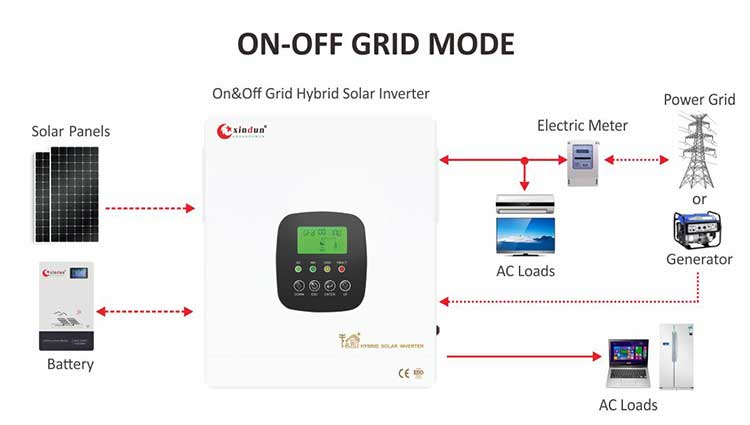
Xindun HFP inverter is a hybrid inverter with high-frequency bidirectional energy storage design. It gives priority to solar energy. When solar power has excess energy, it is stored in batteries or send to the power grid. When solar power is insufficient, it is supplemented by the mains or batteries for load use. It maximizes the use of solar power to achieve the purpose of self power and self use, and excess electricity is connected to the grid. It can be used both on and off the grid, and can meet both needs of users.
Xindun HFP high frequency off grid hybrid inverter has a power specification of 3.3KW-12.3KW, providing DC 24V/48V to AC 220V/230V/240V, 1300W / 2300W / 3300W / 4300W / 6300W / 8300W / 10.3KW / 12.3KW power specifications are optional.
Xindun HFP high frequency solar off grid hybrid inverter has the following functions and advantages:
1. High frequency design: adopting high frequency design, high power density, small size, high overall efficiency, and more fully utilizing space and resources.
2. Bidirectional energy storage design: with bidirectional flow control function, it can realize bidirectional charging of photovoltaic and mains to the battery, and realize flexible energy management.
3. Pure sine wave output: the current output by the inverter is a pure sine wave, which is suitable for various types of loads and is stable and reliable.
4. Ultra-wide MPPT range: with ultra-wide maximum power point tracking range, it can work at the lowest DC voltage and improve the efficiency of the photovoltaic system.
5. Charging and discharging voltage parameters can be set: users can set charging and discharging voltage parameters according to different types of batteries, extend the service life of the battery, and improve system performance.
6. Battery charging current can be set: users can set the charging current according to the battery capacity configuration, which is more flexible and convenient.
7. Multiple working modes can be set: The inverter has the function of setting on grid mode, off grid mode, and hybrid mode, which can be selected according to different needs. At the same time, the output priority and charging priority can also be set to flexibly meet user needs.
8. Support battery-less operation mode and lithium battery BMS communication function: The inverter supports battery-less operation mode and has the communication function with lithium battery BMS, which can realize the monitoring and management of battery status.
9. Output voltage/frequency can be set: The inverter has the function of setting output voltage and frequency, which can adapt to different power grid environments and improve the applicability of the inverter.
10. Multiple communication methods support: The inverter supports RS485 communication, dry contact signal and mobile phone APP (WIFI monitoring/GPRS monitoring), which is convenient for users to monitor and manage.
2. Xindun ESS-Li all in one solar power generator
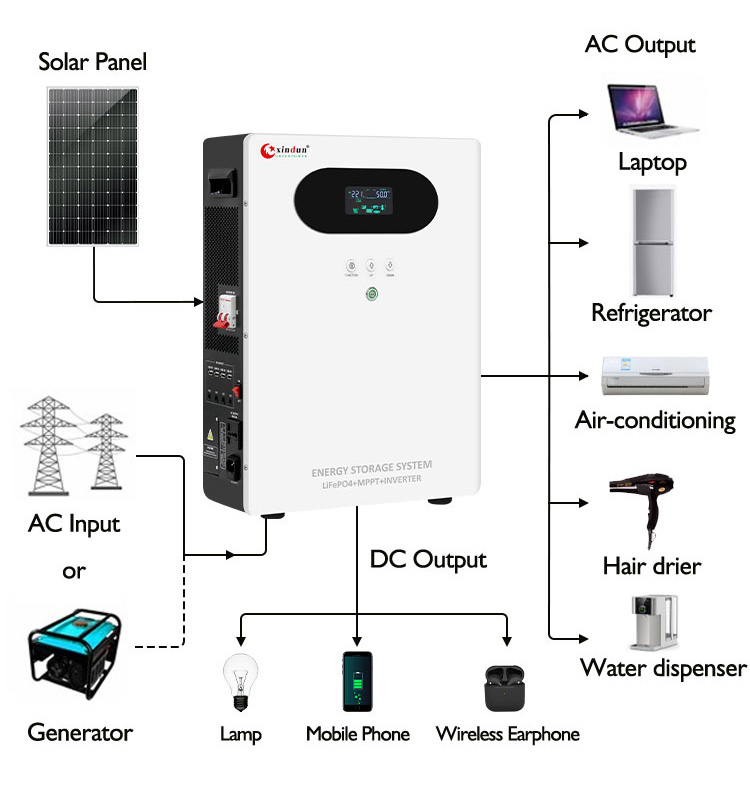
Xindun ESS-Li all in one solar power generator is a solar system that include solar controller, inverter and battery. It can convert solar energy into electrical energy and store it in the battery. It can meet the needs of users for home or commercial use, and has a DC output interface output. It has a power specification of 300w-5000w, provides DC 12V/24V/48V to AC 110V/120V/220V/230V/240V, and has 300w/600w/1200w/2200w/3000w/5000w power specifications. It is a portable, plug-and-play, easy-to-install solar inverter.
Xindun ESS-Li all in one solar generator has the following functions and advantages:
1. All in one design: The all in one solar power generator that include solar controller, inverter and battery simplifies the installation and use process of the system and is more convenient to use.
2. Strong carrying capacity: 3 times the peak power, with strong carrying capacity, suitable for various equipment and load requirements.
3. Stable and reliable: adopts pure sine wave output, provides strong stable output capacity, and ensures the stable operation of the equipment.
4. Efficient energy storage: adopts LiFePO4 lithium battery, which charges faster and stores more energy efficiently
5. Multiple output type interfaces: support AC and DC USB sockets (5V, 12V) output to meet the output interfaces of different devices.
6. Multiple working modes: You can choose AC priority, ECO energy-saving mode or photovoltaic priority mode. Users can switch and adjust according to their needs to flexibly adapt to various scenarios.
7. Adjustable charging current: The mains charging current can be set in the range of 0-30A, and users can adjust it according to actual operation.
8. Visual control: equipped with LCD+LED display, the operation data is clear at a glance, the operation is simple, easy to use, and more intuitive to understand the operation status of the system.
9. Multiple protection functions: such as undervoltage, overvoltage, overload, overtemperature, short circuit and other protections to ensure the safe operation of the equipment. It also has a battery BMS report, comprehensive protection, always guarding your power safety, and more assured when you use electrical equipment
10. Remote monitoring and management: Supports RS232/mobile phone APP/WIFI/GPRS and other communications, allowing you to remotely monitor the system through mobile phone APP or computer anytime, anywhere, and always control the system operation status.
3. Xindun HP PRO-T solar inverter

Xindun HP PRO-T solar inverter is a high efficiency and stable home inverter. Xindun HP PRO-T solar inverter has a power specification of 1000w-8000w, providing DC12V/24V/48V to AC220V/230V/240V, 50Hz/60Hz, with 1000w/1500w/2000w/3200w/5000w/7200w/8000w power specifications optional.
Xindun HP PRO-T solar inverter has the following functions and features:
1. High efficiency and energy saving: adopts high frequency design, small size, high overall efficiency, small no-load loss, and energy saving.
2. Multifunctional integrated design: built in MPPT controller, solar charging, control, inverter, and city power complementary integrated design, convenient and easy to use.
3. Adapt to various loads: Pure sine wave output can adapt to various types of loads to ensure the stable operation of electrical equipment.
4. Flexible configuration: With charging voltage setting function, different battery types and capacities can be used, and flexible configuration can adapt to user needs.
5. Multiple working modes can be set: AC power priority, battery priority, photovoltaic priority and other working modes can be set according to needs.
6. Adapt to different power grid environments: With the function of setting output voltage and frequency, it can adapt to the use of different power grid environments.
7. Multiple input source support: Supports AC power or generator input, adapts to different application scenarios, and provides more flexibility.
8. Simple and intuitive operation: LED+LCD display, simple and intuitive operation interface, clear operation data at a glance, and more convenient user experience.
9. Multiple protection functions: With multiple protection functions, such as overload, temperature, short circuit protection, etc., to ensure the safety of equipment and users.
10. Remote monitoring and management: Support RS485/mobile app remote monitoring and management, convenient real-time control and maintenance.
4. Xindun HP PLUS+ solar inverter
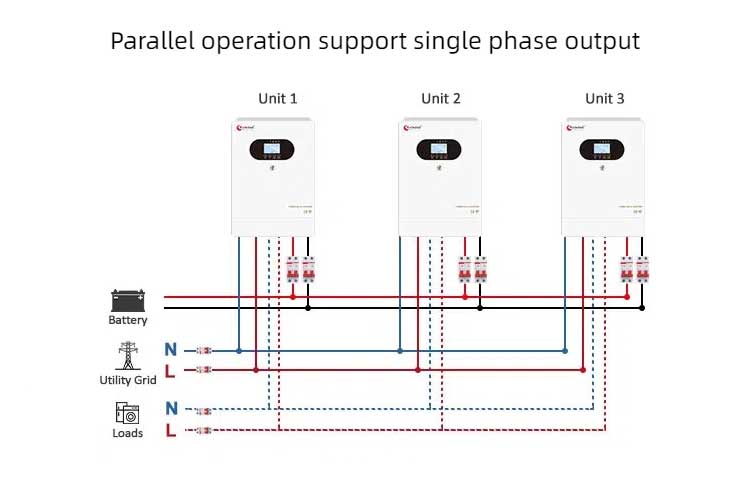
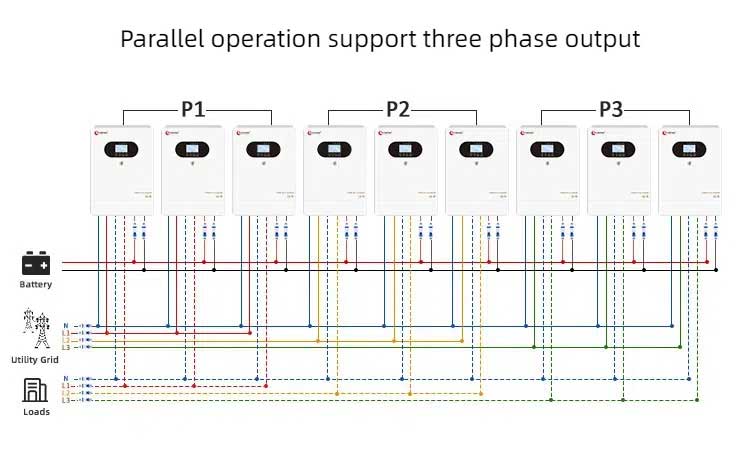
Xindun HP PLUS+ solar inverter is off grid high frequency solar inverter with parallel function, providing DC48V to AC208V/220V/230V/240V, single-unit capacity of 5000w, up to 9 inverters can be operated in parallel, single-unit capacity of 5000w can be expanded to 10KW / 15KW / 20KW / 25KW / 30KW / 35KW / 40KW / 45KW.
The following are the functions and features of Xindun HP PLUS+ solar inverter:
1. Efficient energy conversion: adopts high frequency design to provide higher conversion efficiency and reduce no-load loss, thereby improving energy utilization efficiency.
2. Pure sine wave output: The inverter adopts pure sine wave output to ensure that your load equipment is stably and reliably supplied with electricity without worrying about power quality issues.
3. Multi-energy power supply: Solar and mains hybrid charging, intelligent allocation, and flexible energy management solutions.
4. Intelligent operation and monitoring: Through the LED+LCD display, you can more intuitively understand the operating status of the system. Equipped with intelligent LCD settings, the operation is simple and convenient. Users can set the working mode, charging current, charging voltage, AC output voltage/frequency and other parameters according to their needs.
5. Multiple protection functions: It has multiple protection functions, including overload protection, over-temperature protection, short-circuit protection, etc., to ensure the safe operation of the system and load equipment, so you can use it with confidence.
6. Flexible system expansion: Flexible system expansion capabilities, support up to 9 inverters in parallel operation, support single phase /three phase output, and the maximum capacity of a single machine can be expanded to 45kw, meeting your needs of different scales.
7. Remote monitoring and management: By supporting communication and remote monitoring, you can remotely monitor and transmit data through a mobile phone APP or computer anytime, anywhere, and easily control the overall situation.
5. Xindun WF solar inverter
Xindun WF solar inverter is inverter product with high efficiency, stability, easy operation and wide adaptability. It is not only suitable for home use, but also for industrial and commercial use. It provides DC 12V/24V/48V/96V/192V/240V/384V to AC 110V/120V/220/230V/240V, with a power specification of 700w-40kw. It not only has the common power specifications of 700w / 1000w / 1500w / 2000w / 3000w / 3500w / 4000w / 5000w / 6000w / 7000w / 8000w / 10kw, but also has 12kw/15kw/20kw/25kw/30kw/40kw high power specifications to meet users' demand for high power.
1. High-efficiency output: low-loss toroidal transformer is used to provide higher-efficiency inverter conversion, pure sine wave output, adapt to various types of loads, and enjoy more stable and high-quality electricity.
2. Solar charging function: optional PWM or MPPT solar controller can be built in, which can support 10A-100A solar charging current.
3. Intelligent operation monitoring: the intelligent LCD integrated display screen is used, which is simple to operate and more convenient for users to use, and the operating status and parameters of the inverter can be monitored in real time.
4. Adapt to harsh power environment: not only supports AC input, but also supports diesel (gasoline) generator input. It has the function of voltage and frequency stabilization output, which can adapt to harsh power environment and ensure normal operation.
5. Flexible switching mode: provides adjustable AC priority and inverter priority working mode settings, and the AC charging current is adjustable from 0 to 20A. Users can flexibly configure according to different battery capacities to meet different needs.
6. Automatic protection function: It has a fully automatic and perfect protection function, with a startup peak power of more than 3 times, and can automatically shut down for protection under various abnormal conditions to ensure the safety of equipment and users.
7. Remote monitoring and management: Support RS485 communication interface and mobile phone APP (optional). You can connect to the inverter through a mobile phone or other device for remote control and monitoring.
8. Fault code query: A new fault code query function is added to facilitate users to monitor the operating status of the inverter in real time and handle faults in a timely manner.
Ⅻ. Xindun Power——A Trustworthy Inverter Manufacturer
Xindun Power was founded in 2006 and has been deeply engaged in the innovation and development of solar inverter, solar controller, solar power system and other related products. With its excellent product quality and technical strength, Xindun has continuously gained the trust and praise of customers around the world.
As a professional solar inverter manufacturer, Xindun has a variety of different types of inverter products, including on grid and off grid hybrid solar inverter, high frequency solar inverter, low frequency solar inverter, all in one solar generator, etc. Xindun can not only meet the conventional needs of customers, but also customize production according to the special requirements of customers, providing a full range of services from product design, production to after-sales.
Xindun Power always puts customer needs first. We provide spot wholesale services for solar power inverters to ensure that customers can get the required products in a timely manner. At the same time, we also provide OEM customization services, and customize products according to the specific needs of customers, including customization of product appearance, logo, voltage, power and other parameters to meet the unique needs of different customers.
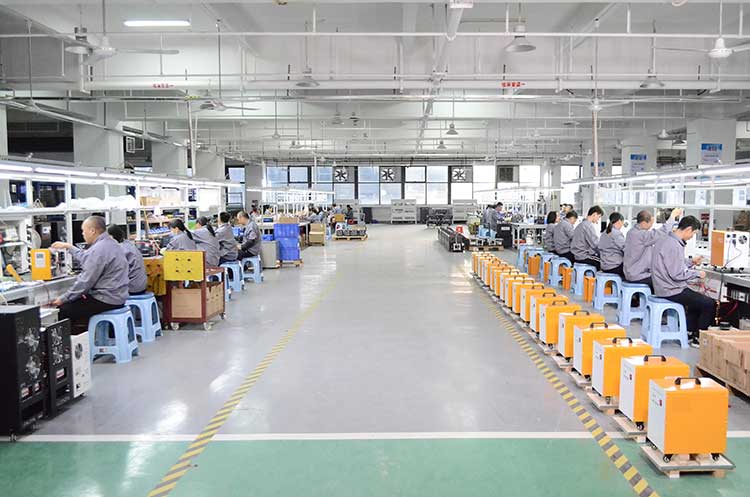
Vietnam has excellent environmental conditions for solar power, with sufficient light resources, abundant solar energy resource, significant cost advantage, government support and preferential policies. These factors have promoted the rapid development of Vietnam's solar industry, making it one of the leading countries in the solar energy market in Southeast Asia and even the world. With the continuous development and expansion of Vietnam's solar industry, the demand for solar inverter will continue to increase. Xindun provides high-quality inverter products and solar system solutions for Vietnam customers.
If you want to learn about or purchase Xindun solar inverter products, whether you are a Vietnam customer or a domestic or foreign customer, you can leave your information and needs in the customer service window at the bottom of the website (http://www.xinduninverter.com). Xindun will contact you as soon as possible during working hours.

 Solar Inverter
Solar Inverter





 Hybrid Inverter
Hybrid Inverter
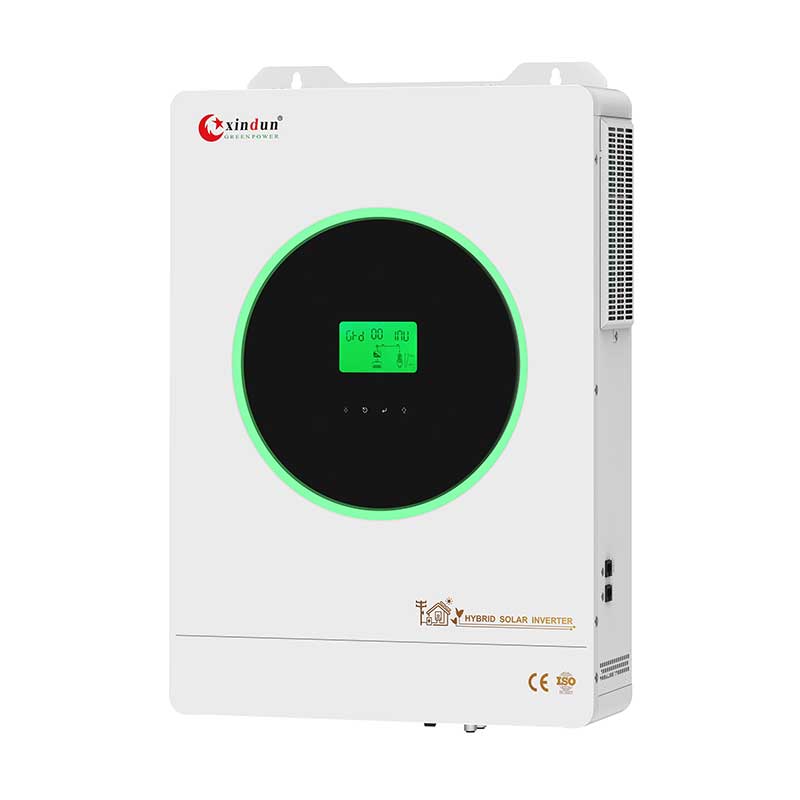
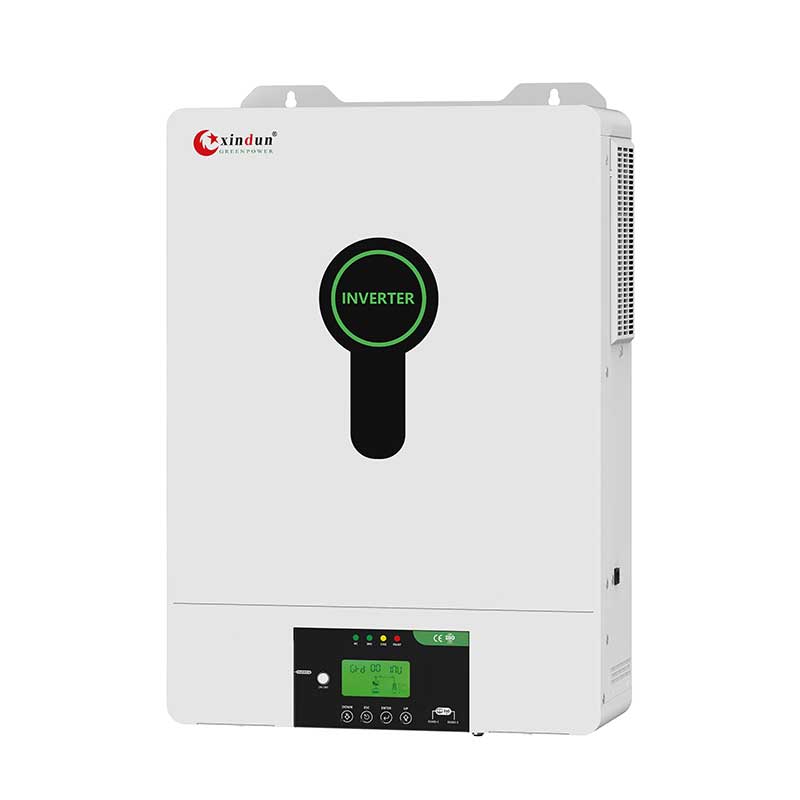


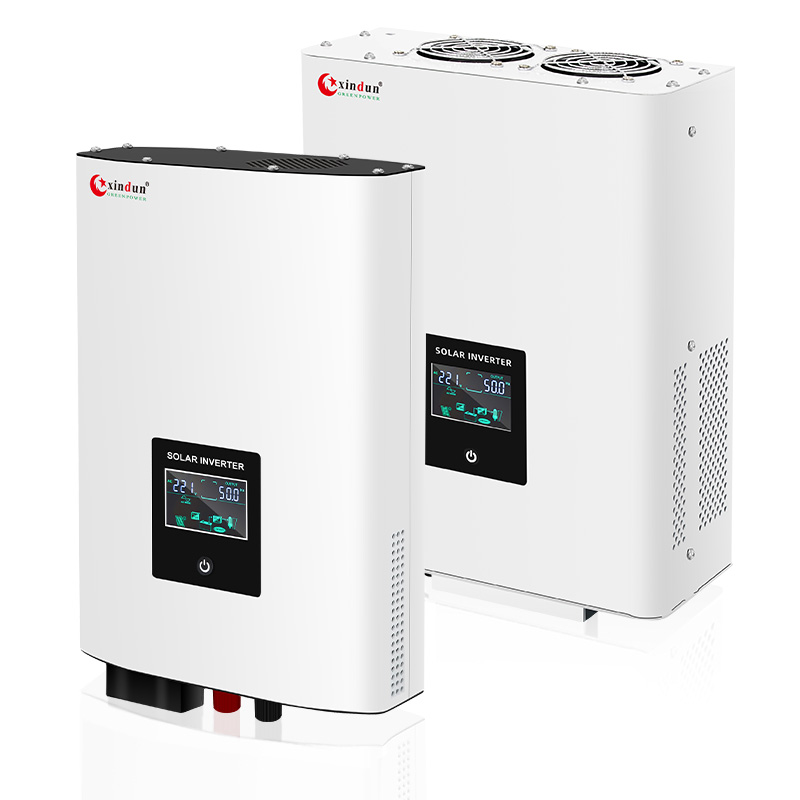
 Power Inverter
Power Inverter
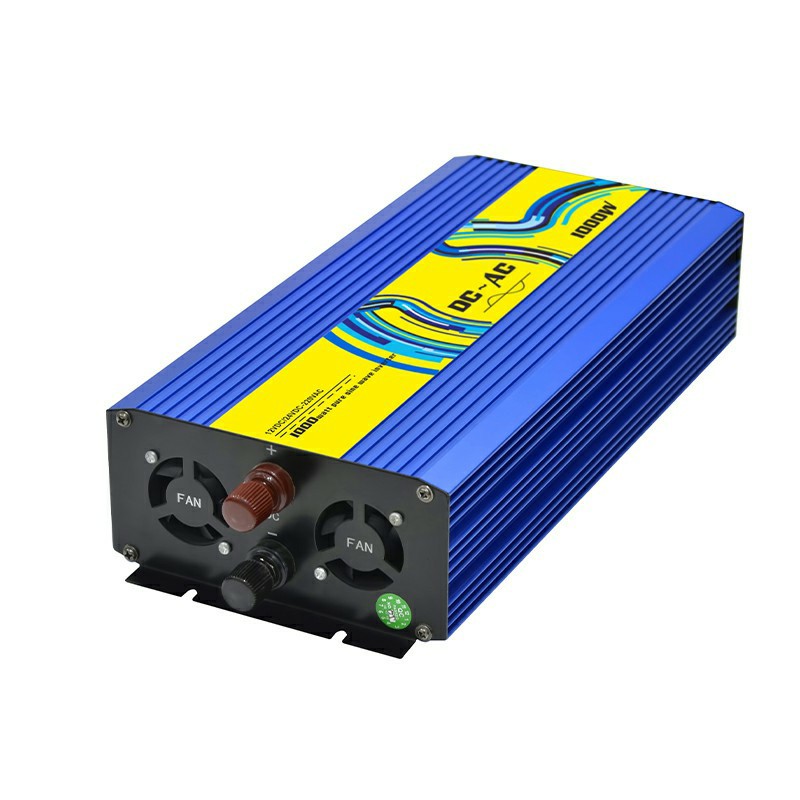


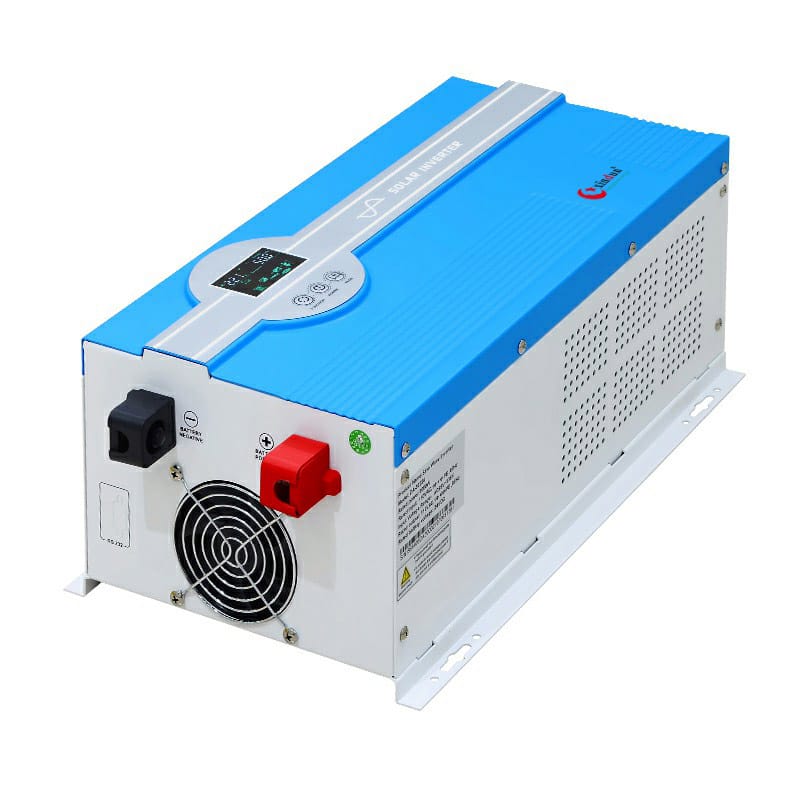
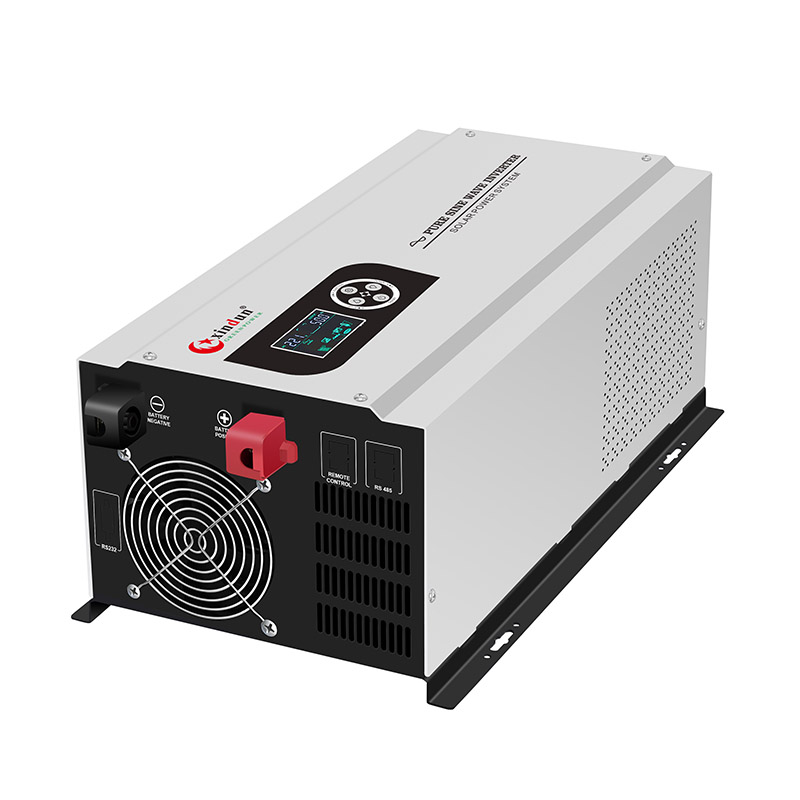
 Split Phase Inverter
Split Phase Inverter

 Energy Storage Inverter
Energy Storage Inverter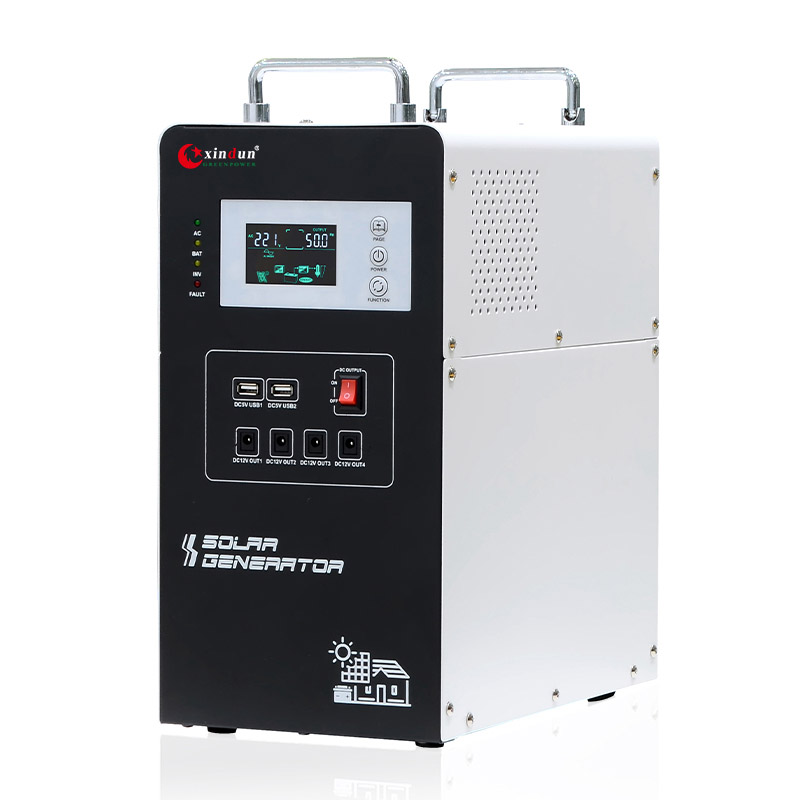




 3 Phase Inverter
3 Phase Inverter
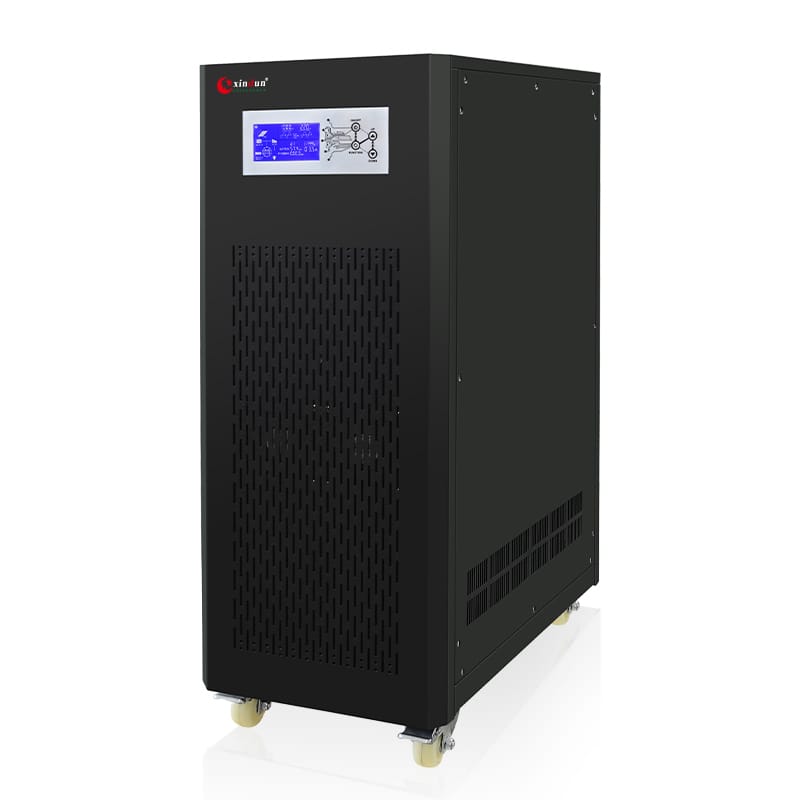



 Solar System Kits
Solar System Kits





 Solar Charge Controller
Solar Charge Controller
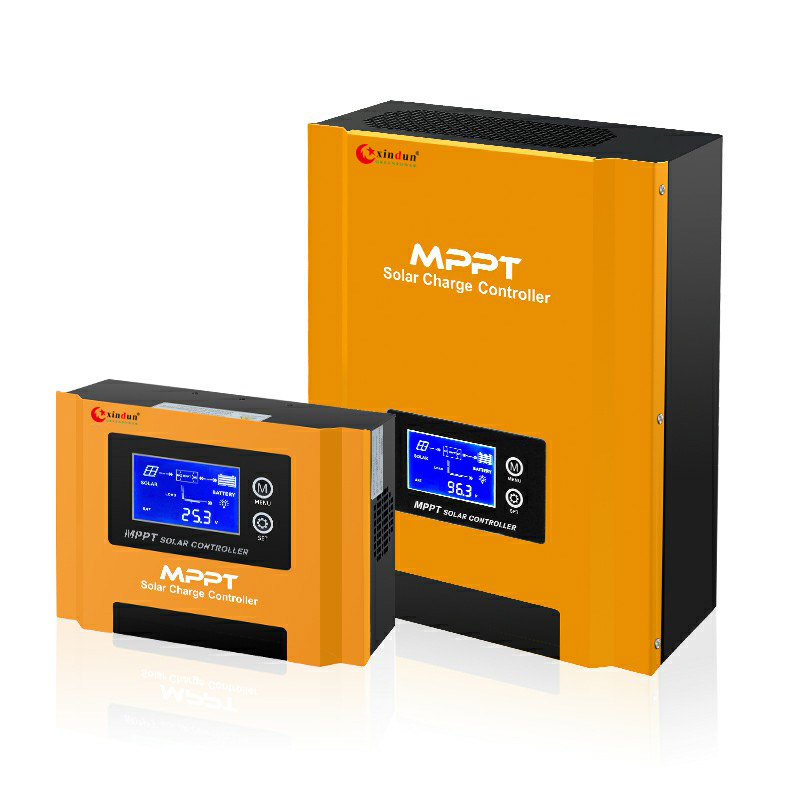

 Solar Battery
Solar Battery



 Asia
Asia
 Africa
Africa



 South America
South America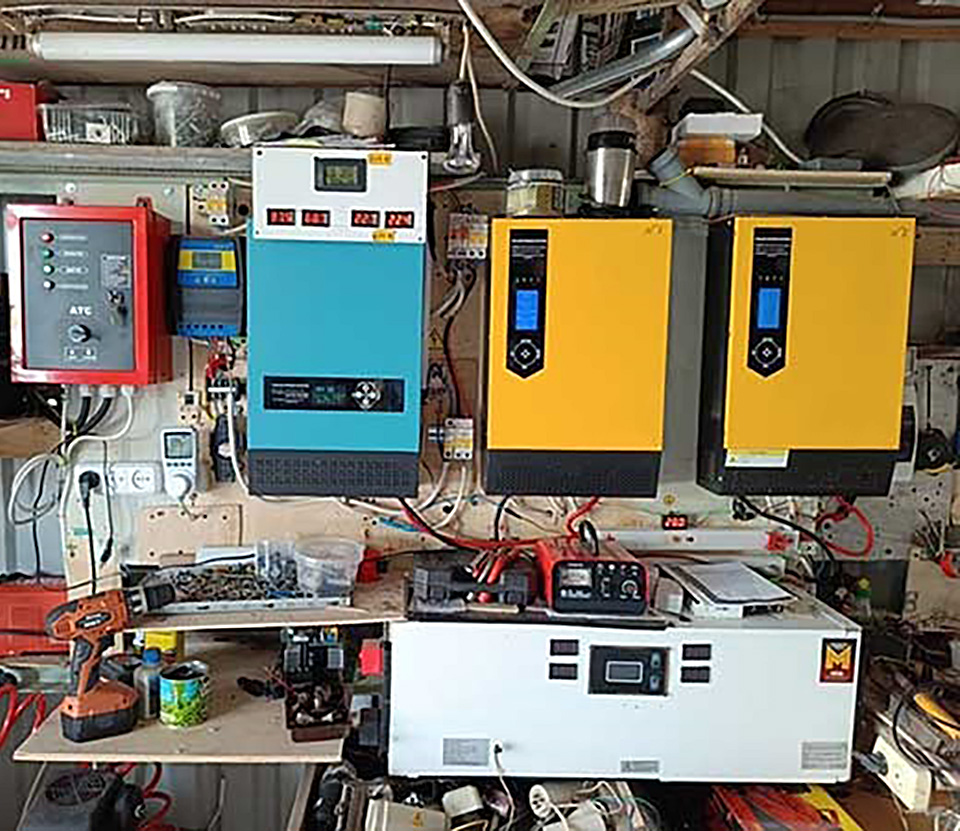
 Europe
Europe

 North America
North America

 Oceania & Antarctica
Oceania & Antarctica










 Home
Home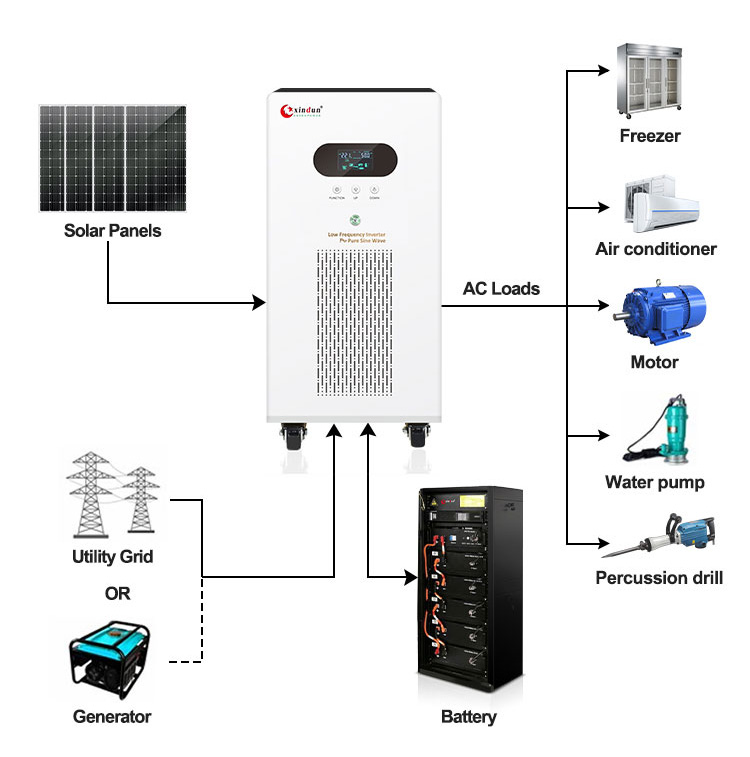
 The Development Prospects Of Solar Power Inverter In Thailand
The Development Prospects Of Solar Power Inverter In Thailand  Top Selling Products
Top Selling Products














